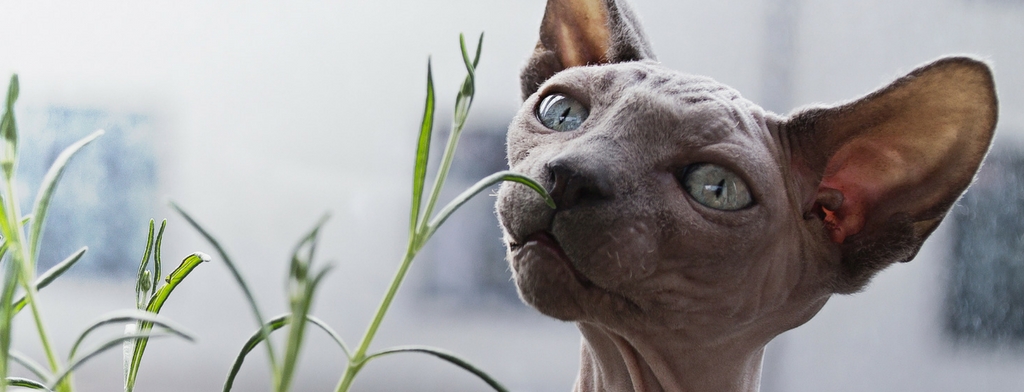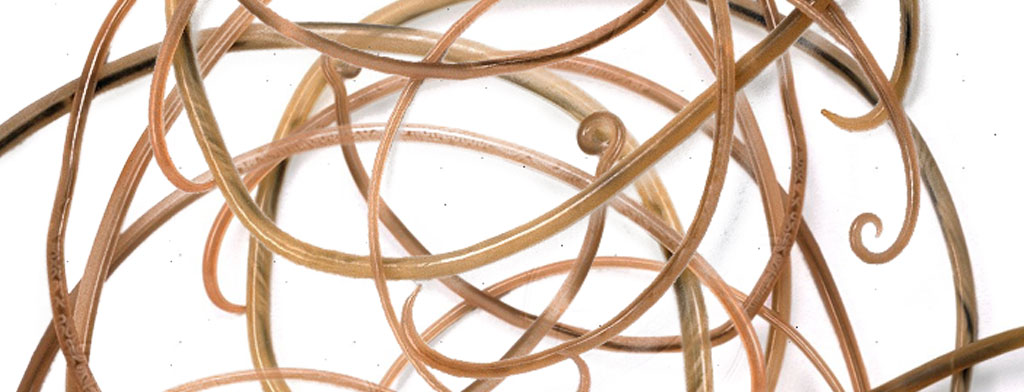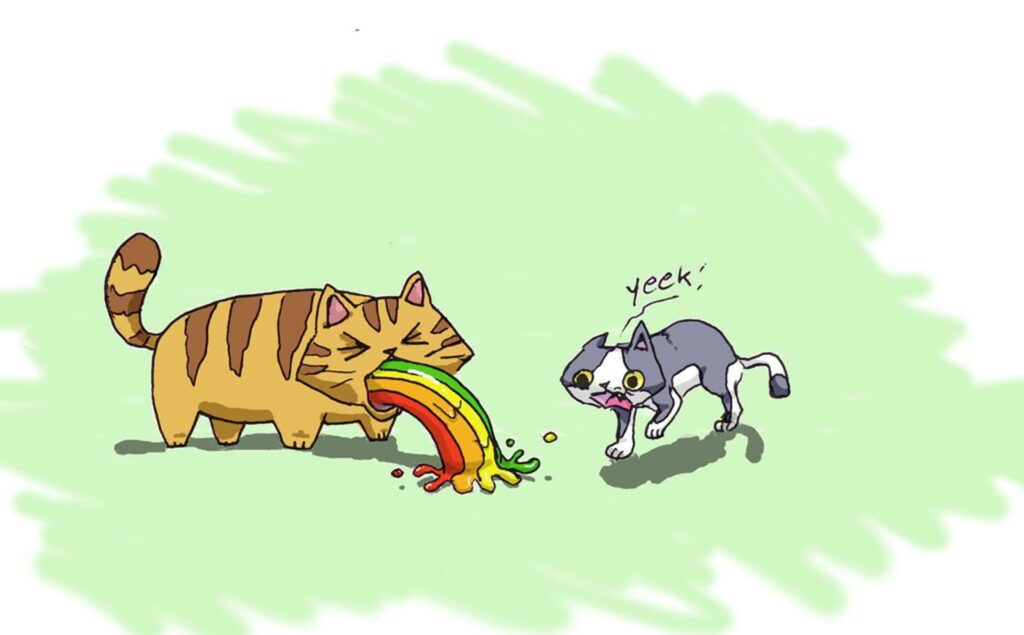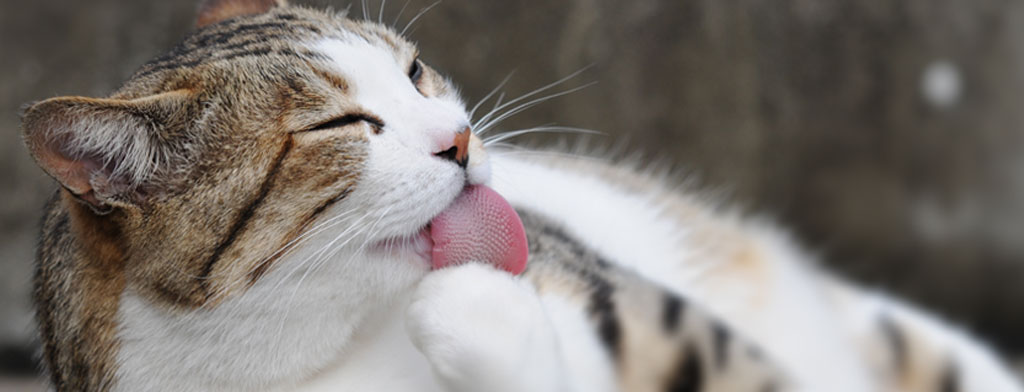For a devoted cat-parent, seeing our kitty vomiting and not knowing the cause, how serious it might be, or what to do to help them feel more comfortable can be distressing. In this blog, we’ll look at some of the possible causes of vomiting in cats, important information to communicate to your vet, and other symptoms to look out for.
Is this even vomiting?
Most of us assume that our cat is vomiting on seeing that typical retching motion we’re all familiar with. That may not be the case. Retching/vomiting, regurgitating, and coughing can all look similar to the untrained eye. So, what’s what?
Vomiting = the active motion of ejecting contents from the cat’s stomach or intestines out through their mouth.
Regurgitation = a passive motion where no force is required to eject contents through the cat’s mouth.
Both of the above may actually be coughing if nothing is expelled from the mouth.
If possible, take a video to show to your vet so that we can help you determine what’s actually happening.

What’s causing it?
The causes of feline vomiting generally fall into two categories: gastrointestinal causes and non-gastrointestinal causes.
Gastrointestinal causes may include:
- Dietary indiscretion (eating something out of the ordinary or spoiled)
- Parasites
- Dietary sensitivity
- Constipation
- Swallowing a foreign item
- Inflammatory bowel disease
- Cancer
- Ulcers
- Poisoning (eg. chocolate, pesticides, toxic plants)
Non-gastrointestinal causes may include:
- Liver disease
- Diabetes
- Pancreatitis
- Kidney disease
- Feline Infectious Peritonitis (FIP)
- Cancer
- Neurological disease

What does it look like?
Although it’s pretty yuck to “get up close and personal”, how it looks and how many times it’s happened can give us some great clues as to the cause of kitty’s vomiting.
Vomited-up food in the shape of a tube commonly happens if cats eat too much or too quickly (most cat devotees are familiar with this type!) But it can also result from something blocking the passage of food or if the cat has a food sensitivity.
A cat who hasn’t eaten for 24 hours may vomit yellow bile. Food stimulates the gall bladder to contract, so bile can back up into the small intestine and stomach when a cat isn’t eating.
Worms can cause cats to vomit, too, with roundworms being the most common parasite seen in cat vomit. It’s important to take the vomited worm/s to your vet to select the appropriate treatment.
Bloody vomit happens if there have been a number of vomits in a row (the acid irritates the stomach lining and oesophagus), if there’s a clotting abnormality (a symptom of some diseases or toxins like rat poison), or if there’s ulceration.
Water or clear liquid may be the fluid contents of the stomach, or your cat may have drunk too much water. Excessive drinking can be a sign of a number of health concerns like diabetes or kidney disease.
If the lining of the stomach or small intestines is inflamed, a cat may vomit white foam.
Brown liquid or a texture like “coffee grounds” in the vomit is usually a sign of digested blood further down the intestinal tract and may be caused by ulcers, a foreign body, or even hairballs trapped in the intestines.
Green vomit usually means the food has come up from the small intestine, as mixing with bile can turn it this colour.
If your cat is bringing up mucus, he may be regurgitating and not actually vomiting.

What else is going on?
If there are other symptoms besides the vomiting, describing these to your veterinary team will be vital.
A combination of vomiting and diarrhoea indicates inflammation in both the stomach and the intestines.
A cat who is vomiting and not eating is likely to be nauseous, which is a sign of many different health issues, including diabetes, kidney and liver disease, IBD and the presence of a foreign body.
If kitty hasn’t “gone to the bathroom” for a few days and is straining, he’s probably constipated, and this can back up the contents of the small intestines and stomach, causing vomiting.
Or if a male kitty is going in and out of the litter tray, straining without producing anything, he may even have a urethral blockage, which can cause kidney damage and nausea after a while.
Vomiting, together with sneezing, may mean that your cat has a virus. It’s not uncommon for vomiting to trigger latent viruses like herpes (which the cat may have contracted as a kitten), due to the immune system being compromised.
If kitty is drinking a lot and also vomiting, health concerns like diabetes, renal disease or certain types of cancers could be root causes.

When is it serious?
It’s pretty common for cats to vomit now and again due to hairballs, gobbling a meal too fast, etc. But no vomiting should be taken lightly – as we’ve seen, it can also be an indicator of a number of serious health concerns.
Always seek veterinary advice immediately if:
- your cat has vomited more than twice or three times in a row.
- the vomiting is accompanied by other symptoms like diarrhoea.
- your cat has not eaten for more than 12 hours and is vomiting.
- the cat has a previously diagnosed condition like kidney/liver disease, diabetes or hyperthyroidism. The vomiting may be a sign that the condition is progressing, and this should be seen as an emergency, as these patients can be challenging to keep hydrated.
- the cat has vomited a worm – this cat and all other animals in the household will need to be dewormed, and litter trays should be kept meticulously clean to prevent reinfection.
While an occasional vomit now and again probably has a very straightforward cause (like noshing a tasty tidbit off the kitchen counter or swallowing mouthfuls of hair at change of season), pay careful attention to anything out of the ordinary, and always feel free to chat to us to help set your mind at ease.
